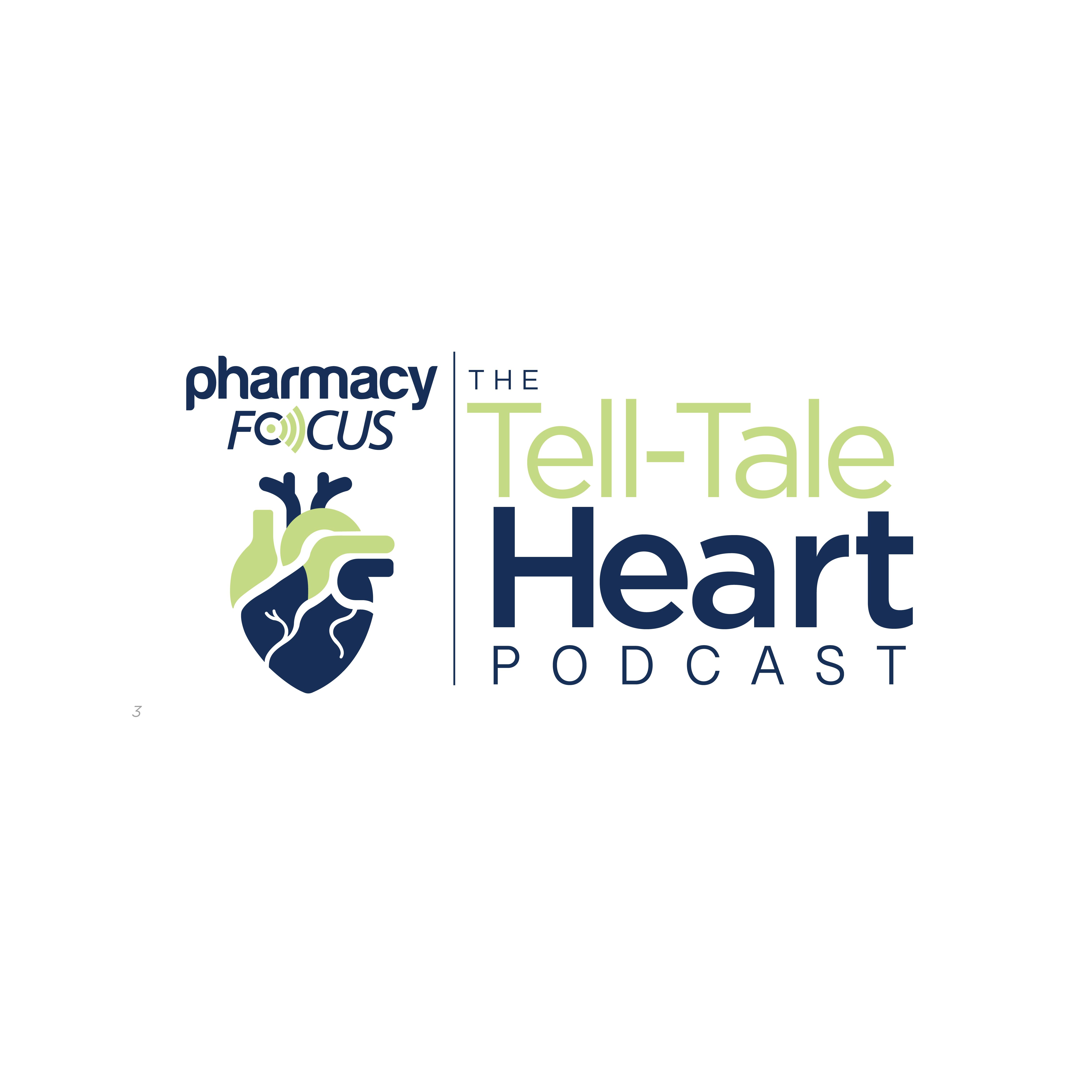Publication
Article
Pharmacy Practice in Focus: Health Systems
Does Corticosteroid Use Have a Role in Severe Community-Acquired Pneumonia?
Author(s):
Key Takeaways
- CAP treatment primarily involves antibiotics, with corticosteroid use in severe cases debated due to conflicting guidelines and evidence.
- ESCAPe trial found no significant mortality reduction with methylprednisolone in severe CAP, possibly due to late treatment initiation and low dosing.
Since the most recent guidelines were published, more evidence has emerged regarding intravenous corticosteroids for severely ill patients.
Community-acquired pneumonia (CAP) is a common infection caused by the inhalation of various organisms into the lower respiratory tract, which can ultimately initiate an immune and inflammatory response, potentially leading to damage to lung parenchyma.1 The disease can range from mild to severe and is defined by major and minor criteria, most recently updated by the 2019 Guidelines for Diagnosis and Treatment of Adults with Community-Acquired Pneumonia by the American Thoracic Society (ATS) and Infectious Diseases Society of America (IDSA) (Table 1).2

Antibiotics are the mainstay of therapy for CAP, but the recommendation to use corticosteroids in severely ill patients is still being debated. Corticosteroids are widely used drugs due to their anti-inflammatory and immunosuppressive properties. They can block the expression and synthesis of cytokines, inhibit the migration of leukocytes, and promote phagocytic removal of cellular debris, which may benefit the inflammatory process occurring in severe CAP.1 The 2019 ATS/IDSA guidelines suggest not routinely using corticosteroids in severe CAP as a conditional recommendation based on moderate-quality evidence. These organizations did not find the quality of evidence available at the time of guideline development to be sufficient to suggest a genuine mortality benefit in patients with severe disease.2 They did, however, endorse the use of corticosteroids in patients with severe CAP and refractory septic shock, in accordance with Surviving Sepsis Campaign guidance.3
This recommendation is in contrast to the 2024 Society of Critical Care Medicine (SCCM) Guidelines on Use of Corticosteroids in Sepsis, Acute Respiratory Distress System, and Community-Acquired Pneumonia, which recommend the use of corticosteroids in patients with severe CAP.4 Corticosteroids are generally well tolerated but have a range of potential adverse effects (AEs) that can be concerning in someone who is critically ill, such as hyperglycemia, sodium and fluid retention, and leukocytosis. Due to their immunosuppressive effects, they can also increase the risk of secondary infections and impair wound healing.1 Data from various studies have been published over the years regarding the use of corticosteroids in severe CAP. These trials varied in their definitions of severe CAP, corticosteroids used, primary outcomes, and results.
Search Criteria
Through a literature search in PubMed, we restricted our review to publication dates between January 2019 and the time of our search in November 2024. This timeline was chosen based on the publication of the 2019 ATS/IDSA guidelines. Articles were included if the study’s primary outcome involved the use of corticosteroids as adjunctive therapy in severe CAP. Meta-analyses were not included. Advanced search terms included corticosteroids or steroid and severe CAP or severe CAP.
Article Selection
Clinical practice guidelines regarding CAP and sepsis management were included for discussion. In addition, articles on pertinent randomized controlled trials and literature reviews were reviewed for inclusion. Ultimately, 2 randomized controlled trials were selected based on investigational scope, sample size, and variety of corticosteroid dosing.

Literature Review
ESCAPe Trial
Since the 2019 ATS/IDSA guidelines were made available, ESCAPe study data by Meduri et al have been published.5 This study (NCT01283009) was a large, randomized, double-blind, placebo-controlled trial that evaluated whether prolonged low-dose methylprednisolone in severe CAP would reduce all-cause 60-day mortality within 72 to 96 hours of hospital presentation. Investigators included patients with severe CAP based on the ATS/IDSA definition (Table 2) and excluded those with previous use of steroids and vasopressor-dependent shock. The methylprednisolone dose can be seen in Table 2, and this was given as a continuous infusion while participants were in the intensive care unit (ICU). After patients were discharged from the ICU, the dose was switched to a twice-daily regimen given intravenously (IV) or via enteral administration. The placebo dose was matched accordingly to remain blinded. Secondary outcomes included postrandomization development of vasopressor-dependent shock or acute respiratory distress syndrome, number of multiple organ dysfunction syndrome–free days to day 8, mechanical ventilation–free days up to days 8 and 28, duration of ICU and hospital length of stay, potential complications from the methylprednisolone treatment, and hospital mortality. Other secondary outcomes evaluated patients up to 180 days post discharge regarding cardiovascular complications; quality of life and functional status at days 28, 60, and 180; serious AEs and complications; and all-cause mortality between 180 and 365 days.
Investigators randomly assigned 584 patients, with 297 in the methylprednisolone group and 287 in the placebo group. The study did not reach the intended sample size of 1420 patients due to low enrollment. Baseline characteristics were similar between groups, with 33% of patients in each group requiring mechanical ventilation (MV) at study entry and approximately 80% of patients in each group having a Pneumonia Severity Index (PSI) score between class IV and V. No difference was seen in the primary outcome of all-cause 60-day mortality (16% vs 18%; unadjusted OR, 0.89; 95% CI, 0.58-1.38; P = .61). Similar results were seen when adjusted for MV status at baseline and site (adjusted OR, 0.90; 95% CI, 0.57-1.40; P = .63) and when adjusted for baseline characteristics (adjusted OR, 0.87; 95% CI, 0.53-1.42; P = .58). Investigators observed no significant differences between the groups in any secondary outcomes during hospitalization and post discharge. No significant differences were found between groups in serious AEs or complications during hospitalization or post discharge.
The authors concluded that low-dose methylprednisolone did not significantly reduce all-cause 60-day mortality in patients with severe CAP. Limitations of this study included being underpowered due to low recruitment, a longer time frame to study drug initiation (patients recruited within 72 to 96 hours may have missed the peak inflammatory mediator time), and the low dose of methylprednisolone potentially not being optimal for anti-inflammatory response.5
CAPE COD Trial
Another large trial with data published since the 2019 ATS/IDSA guidelines is CAPE COD by Dequin et al (NCT02517489).6 This multicenter, double-blind, randomized controlled trial explored the use of IV hydrocortisone vs placebo in patients admitted to the ICU for severe CAP. Patients were included if they were admitted for severe CAP (Table 2) and excluded if they had a do-not-intubate order, pneumonia caused by influenza, or septic shock at diagnosis. Patients in the steroid group received 200 mg daily as an infusion for either 4 or 7 days (based on clinical improvement) before a taper for another 4 or 7 days for a total duration of 8 or 14 days of corticosteroids (Table 2). The primary outcome was death from any cause by day 28. Secondary outcomes were death from any cause by day 90, new need for endotracheal intubation, vasopressor initiation by day 28, number of ventilator-free days by day 28, secondary infections, gastrointestinal bleeding by day 28, and median daily insulin dose by day 7.
Image Credit: © mi_viri - stock.adobe.com

The primary outcome included 795 patients: 400 in the hydrocortisone group and 395 in the placebo group. Baseline characteristics were well matched between groups, with 44% of patients in each group on MV (invasive and noninvasive) and more than 50% of the population having PSI scores of class IV to V. The investigators found that hydrocortisone was associated with a significant decrease in mortality at 28 days (absolute difference, –5.6 percentage points; 95% CI, –9.6 to –1.7; P = .006). By day 90, the mortality rate was 9.3% in the hydrocortisone group and 14.7% in the placebo group (absolute difference, –5.4 percentage points; 95% CI, –9.1 to –0.8). In addition, the hydrocortisone group was associated with 41% less likelihood of endotracheal intubation (HR, 0.59; 95% CI, 0.40-0.86) and 41% less likelihood of vasopressor requirement from baseline (HR, 0.59; 95% CI, 0.43-0.82). Safety outcomes, including infection and gastrointestinal bleeding, were similar across both groups; however, the group receiving corticosteroids had increased insulin requirements vs the placebo group (median difference, 8.7; 95% CI, 4.0-13.8; P < .001). Investigators also evaluated this outcome in prespecified subgroups, one of which was baseline C-reactive protein (CRP) levels greater than 150 mg/L, and a decrease in mortality was seen in this group.
The authors concluded that early hydrocortisone therapy reduced the rate of death by 28% among patients in the ICU for severe CAP. Results may be limited by the lower-than-anticipated mortality incidence in the control group (investigators may have observed patients with lower disease severity) and limited inclusion of immunocompromised patients.6
Discussion
ESCAPe and CAPE COD are the largest randomized controlled trials regarding corticosteroid use in severe CAP whose data have been published since the 2019 ATS/IDSA guidelines were issued. The ESCAPe trial, while lacking statistical significance, alluded to a modest mortality benefit of 2% with the use of a low-dose methylprednisolone infusion.5 In contrast, patients enrolled in CAPE COD receiving hydrocortisone were found to have a statistically significant decrease in mortality.6 The differences in these 2 trials’ results may be due to many reasons.
The first significant difference between each trial was the enrollment time. ESCAPe enrolled critically ill patients with CAP within 72 to 96 hours of hospital admission, with a median time of randomization of 37 hours.5 CAPE COD, on the other hand, had a median time of 15 hours to initiation of treatment.6 This may signal that early treatment with steroids may be more beneficial from an inflammation standpoint to help earlier in the disease state. The next difference was the steroid used and the dosing strategy. Methylprednisolone, which was used in the ESCAPe trial, is a pure glucocorticoid, whereas hydrocortisone is a glucocorticoid with mineralocorticoid effects. The minimal mineralocorticoid effects exerted by hydrocortisone may provide additional benefit in the case of severe CAP, as it helps regulate sodium and potassium levels while helping maintain fluid balance and blood pressure.7
Lastly, although ESCAPe was a large, randomized trial, it was stopped early and did not reach statistical power.5 A greater benefit may have been seen if the trial had enrolled more patients. Other considerations are that the trial was conducted among Veterans Affairs hospitals, so the population was 96% male, whereas the CAPE COD population was only 69% male.5,6 Data from a subgroup analysis of CAPE COD showed a larger mortality benefit in women than in men.6
Conclusion
Due to conflicting evidence over previous years, provider discretion has driven the use of corticosteroids for severe CAP in clinical practice. As more highquality evidence has been published regarding the benefits of corticosteroids and with the recent update to the 2024 SCCM guidelines, the argument for use in severe CAP regardless of shock has gained more traction in the critical care setting. Based on the most recent guidance and data from randomized controlled trials, corticosteroids may play a role in managing severe CAP in specific patients, potentially those with higher CRP levels, which may indicate patients with greater systemic inflammation. More research may be needed to determine which corticosteroid to use, at what dose, and for what duration.
REFERENCES
1. Harris LK, Crannage AJ. Corticosteroids in community-acquired pneumonia: a review of current literature. J Pharm Technol. 2021;37(3):152-160. doi:10.1177/8755122521995587
2. Metlay JP, Waterer GW, Long AC, et al. Diagnosis and treatment of adults with community-acquired pneumonia: an official clinical practice guideline of the American Thoracic Society and Infectious Diseases Society of America. Am J
Respir Crit Care Med. 2019;200(7):e45-e67. doi:10.1164/rccm.201908-1581ST
3. Evans L, Rhodes A, Alhazzani W, et al. Surviving sepsis campaign: international guidelines for management of sepsis and septic shock 2021. Intensive Care Med. 2021;47(11):1181-1247. doi:10.1007/s00134-021-06506-y
4. Chaudhuri D, Nei AM, Rochwerg B, et al. 2024 focused update: guidelines on use of corticosteroids in sepsis, acute respiratory distress syndrome, and community-acquired pneumonia. Crit Care Med. 2024;52(5):e219-e233. doi:10.1097/CCM.0000000000006172
5. Meduri GU, Shih MC, Bridges L, et al; ESCAPe Study Group. Low-dose methylprednisolone treatment in critically ill patients with severe community-acquired pneumonia. Intensive Care Med. 2022;48(8):1009-1023. doi:10.1007/ s00134-022-06684-3
6. Dequin PF, Meziani F, Quenot JP, et al; CRICS-TriGGERSep Network. Hydrocortisone in severe community-acquired pneumonia. N Engl J Med. 2023;388(21):1931-1941. doi:10.1056/NEJMoa2215145
7. See XY, Wang TH, Chang YC, et al. Impact of different corticosteroids on severe community-acquired pneumonia: a systematic review and meta-analysis. BMJ Open Respir Res. 2024;11(1):e002141. doi:10.1136/bmjresp-2023-002141
Newsletter
Stay informed on drug updates, treatment guidelines, and pharmacy practice trends—subscribe to Pharmacy Times for weekly clinical insights.







